|
1743
|
 |
Louis-Bertrand Castel, a Jesuit priest and mathematician designed and constructed a model of the first “color organ,” a stringed musical instrument combined with moving transparent and colored tapes. It related seven colors to the seven whole notes of the occidental musical scale (Peacock 1988, pp.399-401; Graves 1951, p.411; Wagler 1974, p.162, Popper 1968, p. 156). |
 |
|
1789
|
Erasmus Darwin suggested producing visual music by projecting light from oil lamps through colored glass (Peacock 1988, p.401). |
 |
|
1844
|
D. D. Jameson published his pamphlet, Colour-Music, in which he described a system of notation for the new art form and an apparatus that he probably based on Darwin's idea. His instrument filtered light through liquids of various colors and reflected it off of metal plates onto a wall (Peacock 1988, p.401; Popper 1968, p.157). |
|
1869-73
|
 |
Frederic Kastner invented the pyrophone and the ‘singing lamp.’ These instruments used gas jets which opened into crystal tubes to create both sounds and images (Popper 1968, p.157). |
|
1877
|
Bainbridge Bishop, who was interested in the concept of ‘painting music,’ constructed a device that sat on top of an organ, allowing light to be projected onto a small screen as a piece of music was being performed on the organ. He was influenced by Chevreul and Field. His projections used daylight at first and then an electric arc (Peacock 1988, p.401; Popper 1968, p.157). |
 |
|
1893
|
 |
Alexander Wallace Rimington patented his Colour-Organ. He later (1911) described it in his book Colour-Music: The Art of Mobile Colour (Peacock 1988, pp.401-2; Kushner 1990, p.105; Popper 1968, p.157). |
|
1895
|
William Schooling published an article describing an instrument that used vacuum tubes of various shapes. A keyboard was used to activate individual tubes and their current was controlled by a pedal to vary illumination (Peacock 1988, p.401). |
|
1899
|
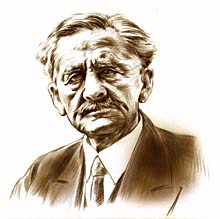 |
The physicist Albert Michelson predicted that there would develop a color art analogous to that of music in which the performer would play colors of the spectrum in any succession or combination (Wagler 1974, p. 162; Birren 1961, p.165). |
|
1909
|
Kandinsky began painting in a non-representational style (Holtzman 1994, p.72). |
 |
|
1909-13
|
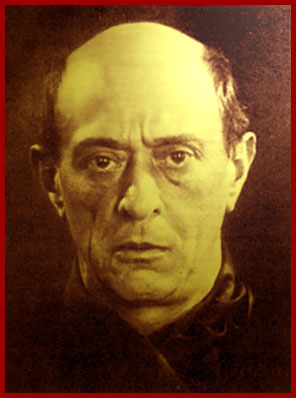 |
Arnold Schonberg created his musical drama Die Gluckliche Hand (The Happy Hand) which contained a light storm, created by projecting colored light (Gerstner 1986, p.165). |
|
1911
|
Scriabin, the Russian composer, composed Prometheus, the Poem of Fire, for which he devised an accompaniment of changing colored lights (Graves, 1951 p.411; Gerstner 1986, p.165). It called for instrumentation like that described by Rimington. (Peacock 1988, p.402). |
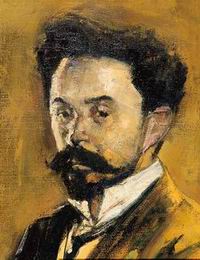 |
|
1912-14
|
 |
Leopold Survage created a series of water colors, Colored Rhythm, to serve as the basis of an abstract animated color film (Russett and Starr 1988, p.35). |
 |
|
1912
|
Alexander Hector designed an instrument to directly associate sound and color (Peacock 1988, p.403). |
|
1914
|
Kandinsky created the abstract musical drama The Yellow Sound in which the main actor is the color yellow (Gerstner 1986, p. 166). |
|
1915
|
Modest Altschuler and Preston S. Millar developed the Chromola to accompany a Carnegie Hall performance of Scriabin’s symphony (Peacock 1988, p.403). |
|
1919-24
|
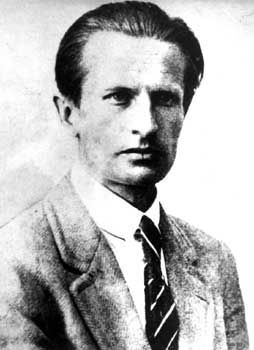 |
Viking Eggeling produced Diagonal-Symphonie, the first purely abstract film, in Berlin. It was a continuous sequence of abstract images that evolved and transformed (Graves 1951, p.413; Holtzman 1994, p.188). |
 |
|
1919
|
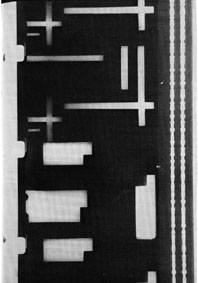 |
Hans Richter made scroll-pictures. He collaborated with Eggeling. They were inspired by Chinese scrolls and ideograms (deGuthmann 1974, p.8; Holtzman 1994, p.188). |
 |
|
1919
|
Mary Halcock-Greenewalt demonstrated Sarabet, which used variations in luminosity to parallel nuances in music. She patented a notational system for performance as well (Peacock 1988, p.404). |
 |
|
1920
|
 |
Vladimir Baranoff-Rossine gave his first optophonic concert in Moscow based on theories contained in Alexander Laszlo’s Die Farblichtmusik (Color-light music) (Gerstner 1986, p.165). |
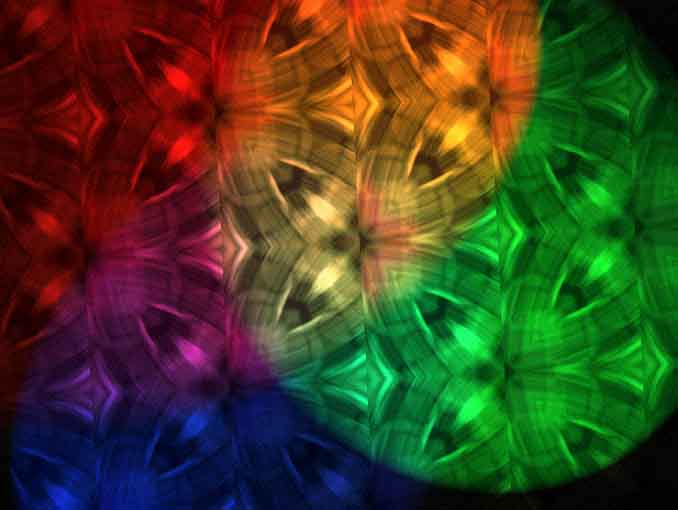 |
|
1921
|
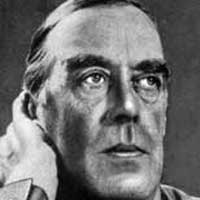 |
Walter Ruttmann’s short Lichtspel Opus I (Lightplay Opus 1) was shown in Frankfort, Germany in what is thought to be the first screening ever of an abstract film for a general audience (Russett and Starr 1988, p.40; Duchting 1997, p.40). |
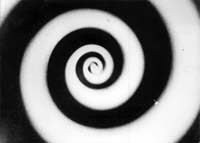 |
|
1922
|
 |
Thomas Wilfred began giving Clavilux concerts in the United States, Canada, and Europe (Malina 1974, p. 64; Pelligrino 1983, pp.5-6; Peacock 1988, pp.404-405). |
 |
|
1923
|
 |
Ludwig Hirschfeld-Mack, while studying at the Bauhaus, discovered that by using bulbs of different color, shadow shows could be enhanced in ways that related to music (Peacock 1988, p.404; Duchting 1997, p.40). |
 |
|
1926
|
Wilfred collaborated in a presentation of Rimsky-Korsakov’s Scheherazade with the Philadelphia orchestra under the direction of Leopold Stokowski (Peacock 1988, p. 405). |
|
1927-31
|
 |
Oskar Fischinger’s Studies 5 through 12 were shown in theatres throughout Europe, the United States, and Japan (Russett and Starr 1988, p.57). |
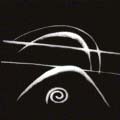 |
|
1930
|
 |
Moholy-Nagy’s Lichtrequisit (Light-Space Modulator) was shown at the International Building Exhibition in Paris (Moholy-Nagy 1970, p.148). |
 |
|
1930s
|
George Hall built the Musichrome. It used eight keys to control two sets of four colors each (Peacock 1988, p.405). |
|
1931
|
Morgan Russell and Stanton Macdonald-Wright, abstract painters, experimented with a kinetic light machine as a way of animating their synchromies (Kushner 1990, p.109). |
|
1939
|
 |
John and James Whitney produced Twenty-Four Variations, their first abstract film (Whitney 1980, p.225). |
|
1941-57
|
Harry Smith produced his early animated films, including images batiked directly onto film and optically printed images (Igliori 1996, p.30). |
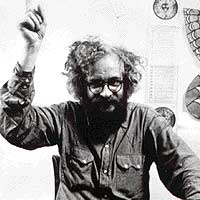 |
|
1953
|
 |
 |
|
Cybernetician Gordon Pask and McKinnon Wood demonstrated the first of their Musicolour machines at Cambridge (Pask in Reichardt 1971, p. 77). |
|
1957-59
|
 |
|
|
Jordon Belson collaborated with composer Henry Jacobs on theVortex Concerts in which moving visual abstractions were projected on the dome of the Morrison Planetarium in San Francisco while electronic music was played (Youngblood 1970, pp. 157-177; Igliori 1986, p.269). |
|
1958
|
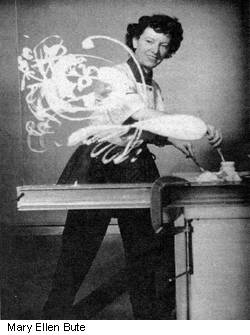 |
Imagination, Mary Ellen Bute’s collage of effects from her earlier abstract films, was broadcast on the Steve Allen show. |
 |
|
1958
|
 |
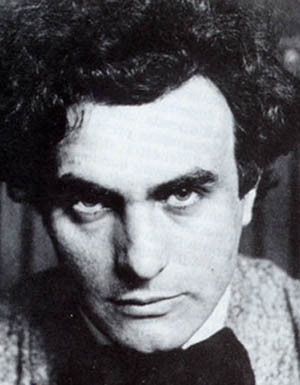 |
|
Edgar Varese composed Poeme Electronique to be part of a sound and light environment created in collaboration with the architect LeCorbusier, for demonstration at the Brussels World’s Fair. Light images were projected on the walls of the pavilion while music moved in sweeping arcs through the pavilion. No attempt was made to synchronize the light and music (Pelligrino 1983, p.12; Gerstner 1988, p.167). |
|
1968
|
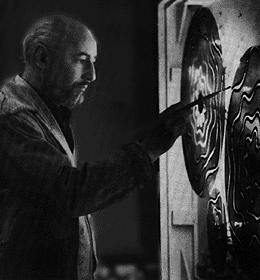 |
Frank J. Malina founded the journal Leonardo. |
 |
|
1968
|
Stanley Kubrick’s 2001: A Space Odyssey was released. It included The Stargate Corridor sequence, supervised by Douglas Trumbull and based on slit-scan devices developed by John Whitney (Youngblood, pp. 151-156). |
|
1969
|
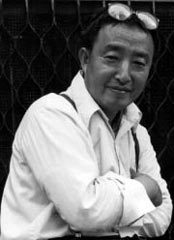 |
Nam June Paik’s composition The Medium Is the Medium was broadcast by WGBH in Boston (Youngblood 1970, p.306). |
|
1970
|
 |
Karl Gerstner, working with Klaus Thomas of IBM Stuttgart, produced a computer program to drive a plotter to produce his Color Signs (Gerstner 1986, p.130). |
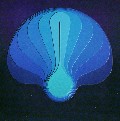 |
|
1973-79
|
Harold Cohen developed AARON, a program to make knowledge of drawing and visual composition explicit (Holtzman 1994, pp. 179-188). |
 |
|
1974-79
|
 |
Laurie Spiegel at Bell Labs created VAMPIRE (Video and Music Program for Interactive Realtime Exploration/Experimentation), which included a few computer animation routines by Ken Knowlton as well as music routines from the GROOVE computer music system created by Max Mathews, et al. |
|
1980
|
John Whitney published Digital Harmony, which included detailed descriptions of some of his films and a listing of computer code that could be run on Apple IIs and similar computers. |
 |
|
1982
|
The first historically accurate performance of Kandinsky’s The Yellow Sound, took place in New York (Gerstner 1986, p.166). |
|
1990
|
 |
Brian Evans produced his Color Study #7, in which he explored temporal color relationships, applying a tension-release theory to color balancing (Evans 1990; Holtzman 1994, pp.189-90). |
|
1997
|
Lisa Lehman and Fred Collopy produced a lumia interpreting Celtic fiddler Eileen Ivers’ studio jam, Blue Groove. |
 |
|
1998
|
 |
Basil Twist’s Symphonie Fantastique, featuring abstract puppets inspired by Kandinsky and Fischinger and moving to Berlioz’s composition of the same name, premiered in New York. |
|
1999
|
The thirtieth anniversary of Sandy Cohen’s Bindu was celebrated in San Francisco at what turned into something of a “music visualization” summit. Present for the day were Sandy Cohen (host), Fred Collopy, Larry Cuba, Scott Draves, Jeff Hoekman, Greg Jalbert, Stephen Malinowski, Bernard Mont-Reynaud, Ron Pellegrino, Andrew Schloss, and David Tristram. |
|
1999
|
Merce Cunningham’s dancers presented the New York premier of Biped at the New York State Theatre. The piece included animated design by Shelley Eshkar and Paul Kaiser and a score by Gavin Bryars. |
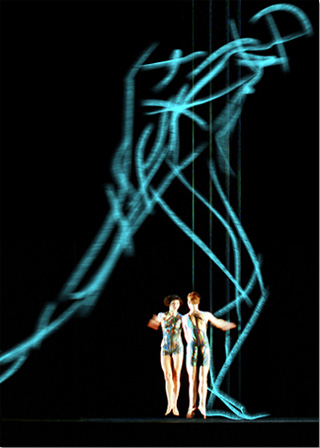 |
|
2000
|
A two videotape compilation of pieces by members of the Iota Discussion Group was produced. The liner notes are available here. |
|
2003
|
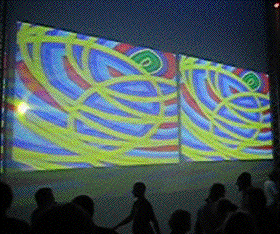 |
The ninth edition of the Sonic Arts festival in Amsterdam, under the name Sonic Light, brought together both classic abstract films and contemporary artists working with visual music. |
|
Organized by Joost Rekveld, the speakers included Larry Cuba, Chris Casady, Michael Scroggins, Pascal Rousseau, Peter Stasny, Benton Bainbridge, Golan Levin and Fred Collopy, among others. The evenings were given over to live performances done by some of them and many others including Sue Costabile, Don Ritter, and Effects. |
|
2003
|
The San Francisco Performance Cinema Symposium, organized by Henry Warwick, took place on September 27th at the Dimension 7 gallery. Presentations and performances were made by Scott Arford, Tommy Becker, Bello Benishauer, Greg Bowman, Kit Clayton, Fred Collopy, criticalartware, Caterina Davinio, Stefan G., Lynn Marie Kirby, Pheobe Legere, Christina McPhee, Sunit Parekh, Shirley Shor, Henry Warwick, and Gregor White among others. |
|
2003
|
Sonic-Vision, a light show produced by 19 animators with creative direction by Chris Harvey and music selected by Moby, premiered in New York’s Hayden Planetarium on October 3rd. |
|
2004
|
Sons et Lumieres: The History of Sound in the 20th Century, at the Pompidou Center in Paris, exhibited two of Wilfred’s Lumias, Baranoff-Rossine’s Piano Optophone, a restoration of one of Stanton MacDonald-Wright’s machines, and films, paintings, photographs, and music by dozens of visual music pioneers. |
 |
|
2005
|
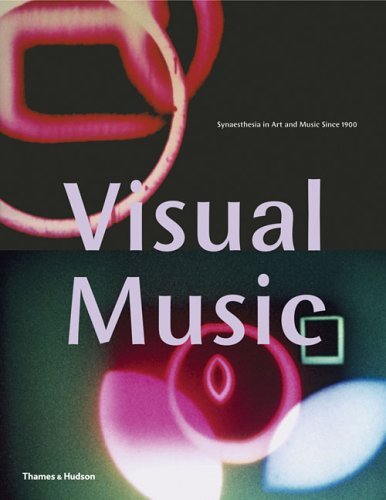 |
Visual Music: Synaesthesia in Art and Music Since 1900, at the Museum of Contemporary Art, Los Angeles and the Hirshhorn Museum and Sculpture Garden, Smithsonian Institution, Washington, D.C. brought art, film, and inventions from over a century together in the largest North American exhibition ever assembled on the topic. More information on it can be found in the Summer 2004 issue of Inside Smithsonian Research. The Hirshorn’s Visual Music Online Interactive gives background on the exhibition |





















































